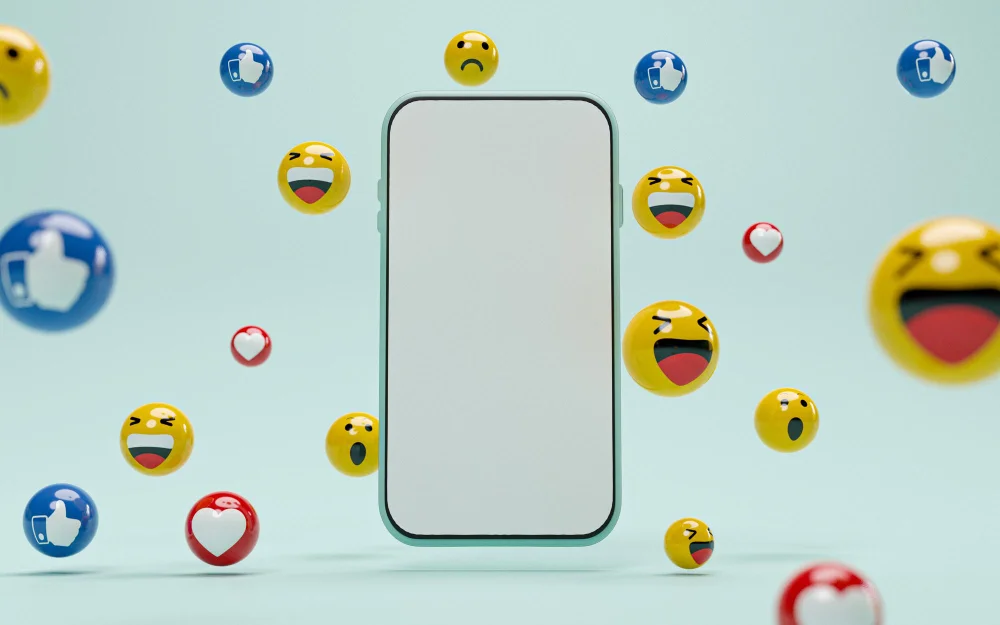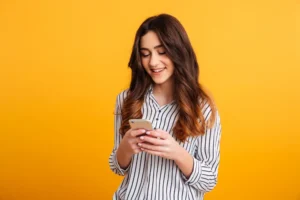“Ever got a text ending with 🙃 and wondered if they were being cheeky, sarcastic, or just confused?”
You’re not alone. I once received that upside-down smile emoji from my best friend after I told her I accidentally wore two different shoes to uni. Her reply? “Nice style! 🙃”. I laughed, but also paused—what exactly did she mean?
This tiny emoji, seemingly simple, has layers of emotional expression behind it. In the ever-evolving world of digital language, understanding these nuances can be the difference between taking offence and sharing a laugh.
In this article, we’ll unpack the full meaning of the upside-down smiley emoji 🙃, explore its emotional and social usage, and provide expert-backed insights on when (and when not) to use it.
What Is the Upside Down Emoji?
The upside-down smiley emoji, officially known as “Upside-Down Face”, was added to Unicode 8.0 in 2015 and quickly became a go-to for expressing emotions that don’t fit neatly into categories like happy or sad.
Unicode and Official Meaning
According to Emojipedia, the official meaning of 🙃 is to convey silliness, sarcasm, irony, passive-aggression, or frustration masked behind a smile.
“It’s the emoji equivalent of saying something with a smile that clearly isn’t meant to be taken at face value.” — Jennifer Daniel, Chair of the Unicode Emoji Subcommittee.
A Linguist’s Take: Emojis Are Emotional Context Tools
Dr. Gretchen McCulloch, an internet linguist and author of Because Internet, explains that emojis like 🙃 serve as paralinguistic cues:
“They let us mimic tone of voice or facial expression that text alone can’t convey.”
In short, the upside-down face is the digital version of an eye-roll wrapped in a smile.
My Take
Personally, I find 🙃 incredibly versatile. It’s how I tell friends I’m annoyed, but I’m still being playful about it. Like texting: “Of course, the Wi-Fi dies right before my submission deadline 🙃.”
How Do People Use the Upside Down Emoji?
1. Sarcasm and Irony
Often, it signals you’re not being serious. For example:
- “Oh sure, I love waiting an hour in line for coffee 🙃.”
2. Playful Frustration or Helplessness
You can use it to soften a complaint:
- “Lost my keys again. That’s the third time this week 🙃.”
3. Self-Deprecation
Useful when making fun of yourself:
- “Told my boss ‘love you’ instead of ‘bye’ at the end of the call 🙃.”
4. Mock Politeness or Passive-Aggression
Sometimes used to veil annoyance:
- “Oh, you ignored my message for 3 days but liked my post? Cool 🙃.”
5. Flirting or Inside Jokes
In close relationships, it can be cheeky:
- “So you’re bringing snacks and wine? You’re perfect 🙃.”
When Not to Use the Upside Down Emoji
While it seems fun, using it in the wrong context can send the wrong message:
Formal Conversations
Avoid using 🙃 in professional emails, academic settings, or with unfamiliar people. It can come across as flippant.
Serious Situations
Using it in emotionally charged conversations can feel dismissive:
- Wrong: “I’m sorry to hear about your loss 🙃.”
- Right: Don’t use an emoji at all. Be present and sincere.
Emoji Evolution: A Glimpse at Usage Stats
According to a 2023 survey by Adobe, 67% of Gen Z respondents said they use emojis to convey emotions better than words, and the upside-down face ranked high for expressing irony and emotional complexity.
Emojipedia also noted a spike in usage of 🙃 during the pandemic, when people felt overwhelmed but still wanted to keep conversations light.
FAQ:
What does the upside-down emoji mean from a girl or guy?
Usually, it means sarcasm, playfulness, or passive annoyance. Context matters more than gender.
Is 🙃 flirty?
It can be—especially if used in a cheeky or teasing way. Think of it like a smirk.
Is it rude?
Only if misused. In casual chats, it’s playful. But in serious or formal settings, it can seem passive-aggressive.
What does 🙃 mean on Snapchat or Instagram?
On Snapchat, it may signal playful or ironic responses. On Instagram, it’s often used in captions to soften self-deprecating humour.
How to Use the Upside Down Emoji Like a Pro
- Read the room: Only use it where sarcasm or silliness fits.
- Don’t overdo it: Use sparingly for effect, not in every message.
- Pair it with words: Emojis aren’t a language on their own—they enhance what you’re already saying.
- Know your audience: Your grandma might not get it. Your mates will.
Final Thoughts
The upside-down emoji is one of the most emotionally rich and culturally flexible tools in digital conversation. Whether you’re being cheeky, ironic, or low-key annoyed, it lets you do so without writing a paragraph.
But like all communication, context is everything. Use it well, and 🙃 becomes your secret weapon.
Your Turn
Have you ever received 🙃 and weren’t sure what it meant? Or maybe you use it in a totally different way?
Share your story in the comments or drop your go-to emoji combo!
Read Also: Erm, What the Sigma Emoji?




